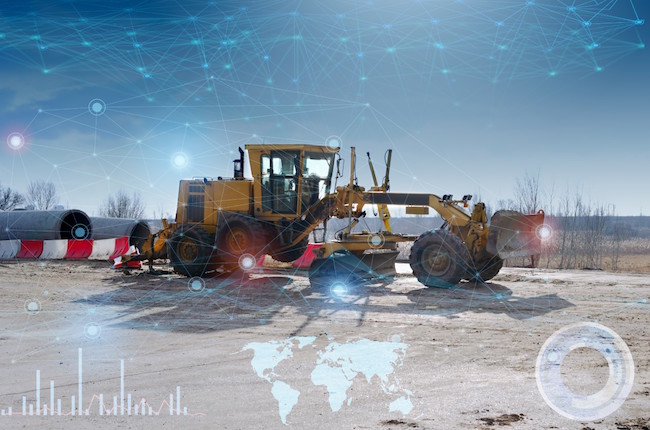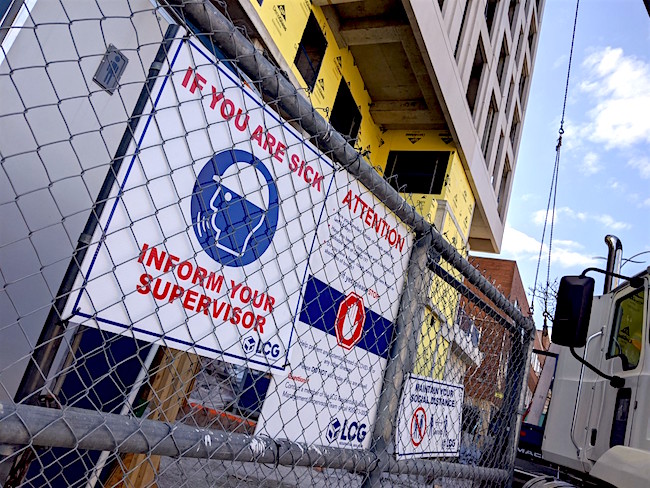
No going back: The abrupt turn to technology on job sites looks unstoppable
By David Kennedy
Software
The use of technology on job sites accelerated through 2020 as contractors adapted to the COVID-19 pandemic. PHOTO: Adobe Stock/Kosssmosss
The global pandemic, which accelerated the construction industry’s drive to adopt technology throughout 2020, may have been an aberration, but the widespread embrace of new tech tools on job sites is here to stay. It has also been a long time coming. Much of the industry has been integrating an increasing level of technology for the past decade.
With cloud software and other such systems in place, some contractors were able to adapt quickly to the dramatically altered landscape of March 2020. Others were forced to enter something of a time warp. As McKinsey and Co. put it in a report last fall, the COVID-19 crisis compressed years of technological change into a matter of months.
But now that the shift has taken place, tech firms do not anticipate a backslide — even when widespread vaccination pushes the pandemic off the top of priority lists.
“The case in point here is that companies realized that investing in technology should not be something that you do in a reactive fashion, but something you look at proactively,” said Ajoy Krishnamoorthy, vice-president of Platform Strategy at ERP developer Acumatica. “It’s not just about being differentiated.”
Among other key functionalities, Krishnamoorthy said the remote work environment COVID-19 normalized, made being in the cloud a must-have. While the pandemic was disruptive for the company’s existing clients, it was not debilitating. “They were able to ask their employees to basically, ‘Take your laptop and work from home starting tomorrow,'” Krishnamoorthy said.
At the same time, many of those lacking the proper software tools quickly switched from their legacy systems to platforms like Acumatica’s to keep their job sites running and their remote staff dialled in.
Construction management software provider InEight saw similar adoption trends as the need to collaborate remotely went through a step change.
Brad Barth, InEight’s chief product officer, said the pandemic accelerated what had been a “creeping” trend toward digitization in construction.
“The pandemic was kind of an urge to urge them into those changes, but now that they’re there and they see all the benefits of it, I don’t see them moving off of it,” he said.
Nearly a year into the pandemic — and no fewer than several more months before an operating environment resembling normal starts to reemerge — Barth said the tech tools contractors and others in construction have adopted are already well established, leaving little chance of a rollback to old ways of working.
More specialized segments of the tech market have also seen rapid uptake during the pandemic.

COVID-19 put job site health and safety at the top of priority lists for many contractors
With few areas requiring as much attention as health and safety, Ryan Quiring, the co-founder and CEO of SafetyTek, says the Saskatoon-based company has more users and daily app interactions than ever. The firm’s paperless safety management platform helps contractors collect data from the field, allowing health and safety managers create custom forms to meet disparate reporting requirements in different jurisdictions.
Along with diverting the process to the cloud — a key step when trying to minimize staff on-site — SafetyTek’s solution helped tackle one of the novel health challenges COVID brought to the surface.
“If you get injured on-site, you can go home and go to your family and not worry about harming them, but if you get a virus on-site, you can go home and spread that,” Quiring said. “And that is what’s really put health and safety on a pedestal, I would say, especially in the construction area where most people are a little more cautious now about how they interact with folks on-site.”
Like their counterparts in other operational roles, health and safety managers were acting from a reactionary position in 2020, Quiring said. In the coming months, he expects to see that change.
“2021 needs to be the year where we can take a calibrated approach to implementing solutions so we don’t get put in this position again,” he said.
In addition to logging mandatory safety forms and related information, SafetyTek is also coaching clients on how to make the best of their data. With metrics such as incidents and near misses on-hand, contractors can glean insight on how to better manage their safety programs.
Likewise, InEight is looking to help the industry utilize the stores of information now at its disposal.
“We’ve got this wealth of data sitting there, so now the opportunity becomes how do we turn that information into something that makes everybody on the team smarter,” Barth said.
Driven in part by the pandemic, Barth said the digital transformation throughout construction has likely now moved past its halfway point. The industry’s use of artificial intelligence and machine learning to increase productivity on job sites, on the other hand, remains in its infancy.
Using both industry and company-specific benchmarking to optimize job sites will keep tech firms growing throughout construction in 2021 and beyond, Barth said. He anticipates this more nuanced approach to data will also help construction overcome a number of the barriers contributing to its so-called “productivity gap.”
Canadian builders should also integrate the lessons learned during 2020 into their post-pandemic plans Krishnamoorthy said. In particular, as AI and other new tools like sensors and robotics filter into construction, contractors need to be willing to act quickly.
“Traditionally, if you go into a process of choosing a new platform and technology, it’s a large committee involved and it’s a decision by committee and it takes forever,” Krishnamoorthy said, adding that instead, as the pandemic took hold, construction companies were “very scrappy” about making adjustments.
“I think that one of the key takeaways from this is that you could actually move fast,” he said. “Moving fast doesn’t mean you’re losing control.”




